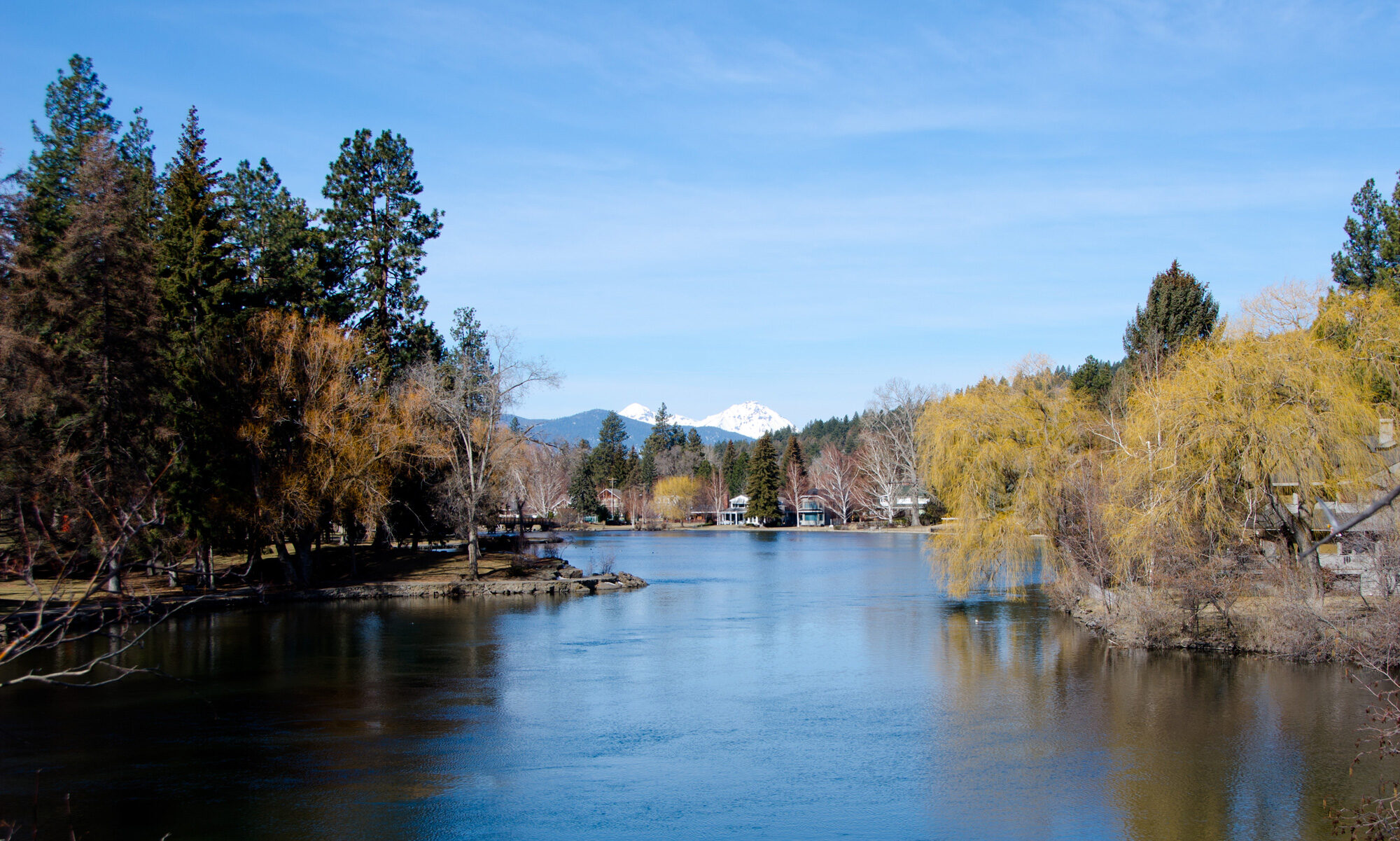A river wants to be a river, not a pond. You can make a river behave like a pond for a while by putting a dam in front of it, but sooner or later – sooner if the pond is shallow – the area outside of the main channel will fill up with sediment and the river will go back to being a river again.
Therein lies the dilemma for the City of Bend, which for decades has been wrestling with what to do about Mirror Pond.
The pond, formed by a dam built a century ago, is often described as “the jewel of downtown Bend,” but that jewel has a tendency to tarnish. Silt keeps building up until the pond threatens to become a mud flat – a problem exacerbated by spring and summer irrigation flows, which wash soil away from riverbanks upstream.
The city has had to dredge Mirror Pond once before, in 1984. Back then the cost was only $312,000. Now the silt has gotten thick again and the city is thinking about another dredging project. But the cost of doing that, including disposing of the possibly contaminated silt, would now run into the millions.
The city can’t spare that kind of money. It decided it couldn’t even spare $500,000 for a study to figure out the best way to handle the sedimentation problem.
So instead it looks like the city is going to ask the voters – maybe as soon as November 2012 – to create a tax district that will pay for present and future dredging of Mirror Pond.
That’s a bad idea, and here’s why:
Committing to dredge Mirror Pond in perpetuity would put the city on a never-ending – and very expensive – treadmill. The need for dredging probably is going to get more frequent as more development occurs up-river from the pond. (It took 73 years before the pond needed dredging the first time, but only about 25 before it needed dredging again.) And you know it’s not going to get any cheaper.
The new tax district also would increase the overall tax burden on local residents and make them less likely to approve future levies for other, higher-priority needs like police or schools.
Advocates of dredging act as if the only alternative is allowing the pond to turn into a mud flat. But they’re offering a false choice.
In place of Mirror Pond, picture a sparkling river flowing through a broad, green meadow. Imagine people canoeing, kayaking, fishing, bird-watching, picnicking, or just sitting on the banks and watching the water go by. That isn’t so horrible, is it?
If you want a clearer idea of what it might be like, take a look at River Bend Park upstream from the Old Mill District, where the riverbank has been allowed to “go natural.” It’s become one of Bend’s most popular spots for locals and visitors alike.
It’s time for some out-of-the-box – or maybe that should be “out-of-the-mud” – thinking about Mirror Pond. Instead of trudging along on the endless dredging treadmill, the city should give the dredging idea THE BOOT. Permanently.
